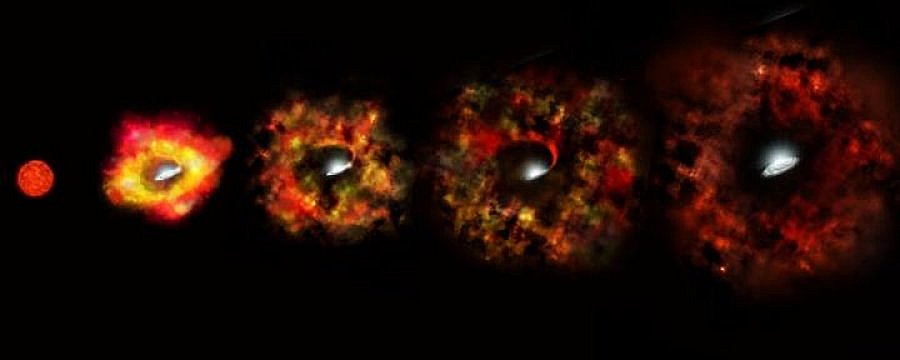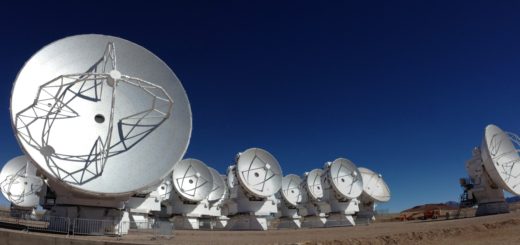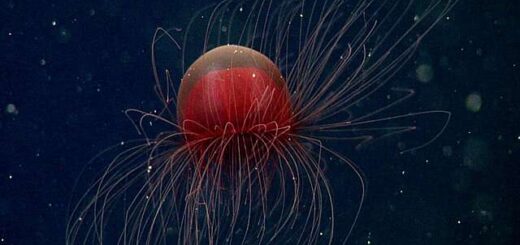Giant Star That Failed To Explode In Supernova And Became A Black Hole
A dying star – 25 times as massive as our sun – should have exploded in a very bright supernova but instead it was reborn as a black hole.
This kind of event was made for the first time by astronomers, who were looking for failed supernovae in other galaxies, using the Large Binocular Telescope (LBT).
Among the galaxies they’ve been watching is NGC 6946, a galaxy 22 million light-years away that is nicknamed the “Fireworks Galaxy” because supernovae frequently takes place in this region.

Particularly one star named N6946-BH1 and located in the “Fireworks Galaxy” began to brighten weakly in 2009 and it finally vanished by 2015.
Using process of elimination, the researchers eventually concluded that the star must have become a black hole.
An interesting question is: how often stars experience massive fails?
N6946-BH1 is the only likely failed supernova that we found in the first seven years of our survey,” said Scott Adams, a former Ohio State student who recently earned his Ph.D. doing this work. Adams was able to make a preliminary estimate.
Co-author, professor of astronomy at Ohio State, Krzystof Stanek, pointed out that the really interesting part of the discovery is the implications it holds for the origins of very massive black holes.
It doesn’t necessarily make sense, said Stanek, professor of astronomy at Ohio State, that a massive star could undergo a supernova — a process which entails blowing off much of its outer layers — and still have enough mass left over to form a massive black hole on the scale of those that LIGO detected.
They published their latest results in the Monthly Notices of the Royal Astronomical Society.



 Creators of mankind
Creators of mankind Description of “Tall white aliens”
Description of “Tall white aliens” Where they came from?
Where they came from? About hostile civilizations
About hostile civilizations The war for the Earth
The war for the Earth “Tall white aliens” about eternal life
“Tall white aliens” about eternal life Video: “Nordic aliens”
Video: “Nordic aliens” Aliens
Aliens Alien encounters
Alien encounters The aliens base
The aliens base UFO
UFO Technology UFO
Technology UFO Underground civilization
Underground civilization Ancient alien artifacts
Ancient alien artifacts Military and UFO
Military and UFO Mysteries and hypotheses
Mysteries and hypotheses Scientific facts
Scientific facts


















